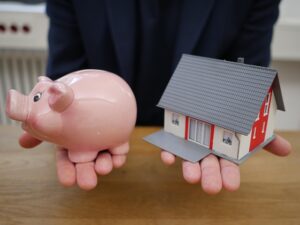Revolutionizing Builds: Sustainable Practices for Custom Design
Sustainable building emphasizes minimizing environmental impact and maximizing resource efficiency through strategies like energy-efficient insulation, renewable energy sources, and eco-friendly mater…….

Sustainable building emphasizes minimizing environmental impact and maximizing resource efficiency through strategies like energy-efficient insulation, renewable energy sources, and eco-friendly materials. Select Custom Builds play a key role by optimizing natural light, ventilation, and structural integrity, reducing waste and supporting local economies. Innovative techniques like advanced materials, modular construction, and 3D printing revolutionize the industry, with green certifications like LEED promoting sustainable practices and driving urban development towards eco-friendliness.
“Sustainable building practices are transforming the construction industry, leading to eco-conscious and resource-efficient structures. This comprehensive guide explores key aspects of green architecture, offering insights for both professionals and enthusiasts. From fundamental knowledge to innovative techniques, we cover everything from energy-saving design strategies to the choice of eco-friendly materials. Learn how water conservation, green certifications, and custom builds contribute to a more sustainable future. Discover practical steps towards environmentally responsible construction.”
- Understanding Sustainable Building Fundamentals
- Design Strategies for Energy Efficiency
- Eco-Friendly Materials Selection Guide
- Innovative Construction Techniques
- Water Conservation in Architecture
- Green Certifications and Their Impact
Understanding Sustainable Building Fundamentals

Understanding sustainable building practices begins with grasping their fundamental principles. It involves designing and constructing structures that minimize environmental impact while maximizing resource efficiency. This includes strategies like energy-efficient insulation, renewable energy sources, and eco-friendly materials. By integrating these concepts, builders can create spaces that are not only aesthetically pleasing but also contribute to a healthier planet.
When considering sustainable building, selecting custom builds plays a pivotal role. Tailoring designs to specific needs allows for optimized use of resources, reducing waste. Just as individuals might choose to put together custom computers or seek the best PC builders near them for high-performance machines, so too can architects and contractors customize builds to meet the unique demands of sustainable living. This approach ensures that every aspect of construction serves a purpose, making it an essential step in embracing eco-friendly practices.
Design Strategies for Energy Efficiency

In the pursuit of sustainable building practices, design strategies for energy efficiency play a pivotal role. One key approach is to embrace custom builds that are tailored to maximize natural light and ventilation, reducing the reliance on artificial lighting and cooling systems. By strategically placing windows, incorporating skylights, and designing open floor plans, buildings can harness the power of passive solar heating during colder months while promoting cross-ventilation for better temperature regulation in warmer seasons. This not only minimizes energy consumption but also contributes to a healthier indoor environment.
Additionally, selecting high-performance building materials that offer superior insulation properties is essential. Advanced materials like recycled steel, sustainable wood certifications, and energy-efficient windows significantly reduce heat transfer, keeping buildings cooler in summer and warmer in winter. These choices align with the growing trend of eco-conscious construction, where even components typically used for smartphone parts replacement or 3D printer parts ordering can be sourced responsibly to minimize a building’s overall environmental impact. Similarly, best PC builders near me are increasingly adopting these principles, demonstrating that sustainability and cutting-edge technology can go hand in hand.
Eco-Friendly Materials Selection Guide

When embarking on sustainable building practices, one crucial step is selecting eco-friendly materials for your project. This process demands a strategic approach that balances environmental impact with structural integrity. A comprehensive guide can help builders and DIY enthusiasts alike navigate this landscape. Start by identifying locally sourced materials, which reduce transportation emissions and support regional economies. Opting for recycled or reclaimed materials further minimizes waste and conserves natural resources.
For those considering custom builds, whether it’s a DIY desktop computer setup or a high-end gaming PC assembly, the selection process becomes even more important. Tech support for custom builds often involves sourcing sustainable components while ensuring optimal performance. This balance requires knowledge of material properties and availability, making it a rewarding challenge for both builders and the planet.
Innovative Construction Techniques

The construction industry is undergoing a green revolution, and innovative techniques are at the forefront of this sustainable shift. One such approach gaining traction is Select Custom Builds, which involves tailored design solutions for each project. This method allows architects and builders to create structures that seamlessly integrate with their natural surroundings while optimizing energy efficiency. By leveraging advanced materials and modular construction methods, Select Custom Builds reduces waste and minimizes the environmental impact associated with traditional building practices.
Incorporating modern technologies, such as 3D printing and off-site fabrication, enables more precise and faster construction. These techniques are not just about aesthetics; they also facilitate smart design choices. For instance, 3D-printed components can be designed to reduce material usage and enhance structural integrity. This is particularly relevant when considering the ongoing need for repairs and upgrades, as demonstrated by the popularity of smartphone parts replacement and online PC tuning guides among tech enthusiasts. Similarly, custom laptop skins showcase the market’s demand for personalized products, which can be extended to building components, ensuring both uniqueness and sustainability.
Water Conservation in Architecture

Water conservation is a critical aspect of sustainable building practices, and architecture plays a pivotal role in achieving this goal. By integrating smart design elements and efficient systems, builders can significantly reduce water consumption in both residential and commercial spaces. One innovative approach is to incorporate water-efficient fixtures and appliances, such as low-flow showerheads and dual-flush toilets, which are easy to install during the construction phase or retrofitted in existing buildings.
Select Custom Builds, known for its commitment to sustainability, utilises robotic kit construction and home computer workshop technologies to create highly efficient homes. Their custom electronics assembly ensures precise control over water usage through smart plumbing systems and automated leak detection. This not only conserves water but also reduces energy bills, making sustainable living more accessible and appealing to environmentally conscious folks.
Green Certifications and Their Impact

Green Certifications have become a cornerstone in the pursuit of sustainable building practices. These certifications, such as LEED (Leadership in Energy and Environmental Design), BREEAM (Building Research Establishment Environmental Assessment Method), and Green Star, serve as benchmarks for eco-friendly design, construction, and operation. By adhering to these standards, builders like Select Custom Builds can create structures that minimize environmental impact without compromising on aesthetics or functionality. This commitment resonates with clients seeking not just visually appealing spaces but also those that promote sustainability and energy efficiency.
The impact of these certifications extends beyond the individual project. They contribute to a broader trend towards sustainable urban development, driving innovation in materials science, construction techniques, and operational strategies. As awareness about climate change grows, green certifications are increasingly becoming a necessity rather than just a desirable feature, similar to how personalized phone case designs or Android smartphone customization has become mainstream for consumers looking to express their individuality. Similarly, the ability to replace smartphone parts promptly and efficiently reflects the modern consumer’s demand for convenience and adaptability – a concept that builders can apply in making buildings more adaptable and sustainable.
Sustainable building practices, as explored through fundamental understanding, design strategies, material selection, innovative techniques, water conservation, and green certifications, offer a holistic approach to creating eco-friendly structures. By adopting these methods, architects and builders can contribute to a greener future while enhancing the longevity and comfort of buildings. Incorporating custom builds that prioritize sustainability not only meets the needs of modern occupants but also ensures a positive impact on the environment for generations to come.







